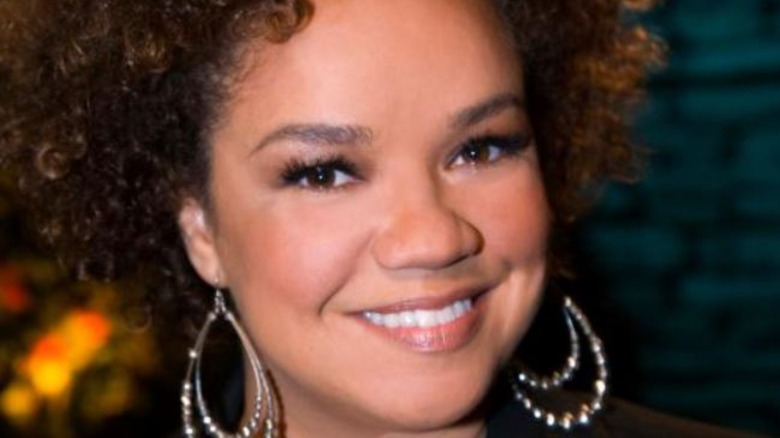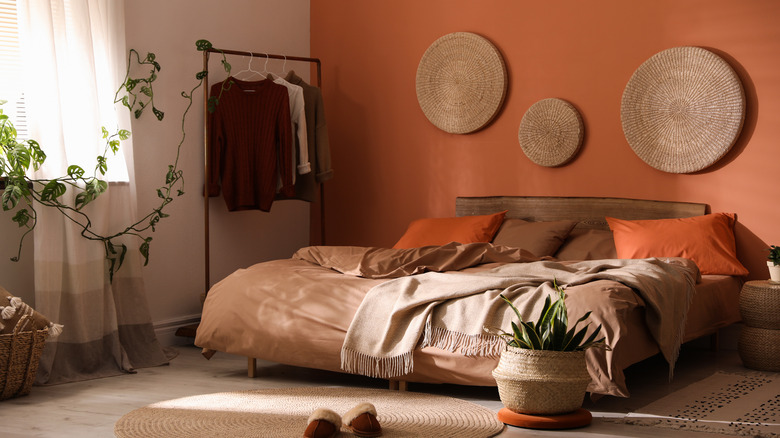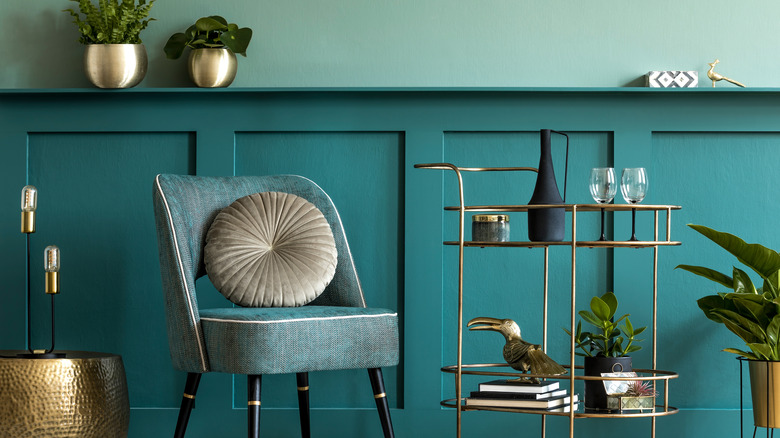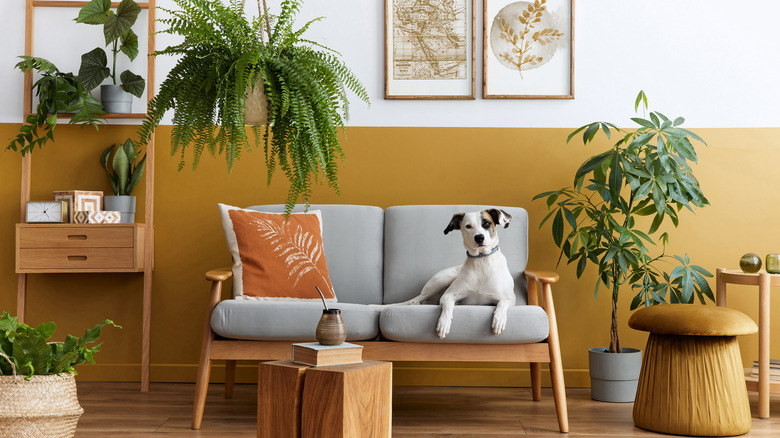Design Star's Kim Myles Answers Your Questions About Picking Colors
For years, paint companies and designers have chosen the colors of the year. Vibrant shades along the color spectrum were supposed to be the most popular or most-used hues. But for some time, that wasn't the case. All-white interiors have trended for ages, with many people opting for white walls and furniture rather than bright tones. Though color hasn't completely disappeared, it's only recently that people are opting for brighter interiors and letting neutrals fall behind. According to an interview interior designer Laurence Carr did with Best Life, too much white can feel sterile in a home and mimics the look of a showroom, rather than a place where anyone lives.
More and more people are choosing to add bright colors to their space, whether that's with furniture, paint, or décor. However, it's also not always the easiest decision to make. "Color is something that's really daunting to a lot of people," explains Kim Myles on a vlog via HGTV. Myles now hosts "High Design" on Discovery Plus, where she transforms marijuana dispensaries across the country. Myles urges fans to "Keep having fun with color, keep trying things." But some guidance on picking the right colors for your space is something you no doubt will appreciate.
Know that color is deeply personal
In the HGTV vlog, when asked how she knows if she chose the right color, Myles says it's a matter of trusting her gut. "I wish I could tell you I have some kind of specific regime I adhere to that gets me to that perfect color selection each time. But it would be a lie. Because at the end of the day, I choose colors based intuitively on what I respond to," she explained. "I have a visceral visual response to color. That's how I know when I've got it right; I have a reaction to it."
Unfortunately, there is no right or wrong color for a space — and that can make decision-making all that more difficult. To find the ideal color, you have to test out a few options. Of course, paint looks different from the sample, in the bucket, and on the wall. You should also test on multiple walls in the room, advises The Flooring Girl. That way, you can see how the paint looks in different areas of a room or when it's hit by different lights. It's also a good idea to look at the colorant throughout the day and with artificial lighting. When you find a color you like in various situations, you'll know it's the right choice.
Get inspired by nature
If you're having trouble finding a starting point for choosing a color, it might be time to look for inspiration. And there's one place that just might have all the hues you need. "Another great indicator for color selection: look to nature," Myles says on the HGTV vlog. "Nature never gets it wrong. You can look at a single item in nature and find an entire range of color stories within that." In particular, nature has long since been a source of inspiration for designers because it's comforting and improves our emotions, says Samantha Kaplan.
And you don't always have to look at the typical parts of nature, like flowers or forests. Any object can serve as inspiration. "If you're going for a very soft, kind of enveloping neutral palette, consider the interior of a nautilus shell," Myles suggests. "There are soft greens, beautiful pinks, tans, lavenders even. I mean, there is just a whole world of color in there. If you're stuck, go to nature. There's a no-fail solution every time."
Take note of your décor
When designing a room, you want everything to work together. Often, this means taking inspiration from décor pieces in your home. When asked how to pair a rug with furniture and paint colors on an HGTV vlog, Myles says, "I would use the rug as a jumping-off point for the paint. Really, use your carpet as a cue. I mean, it's got burnt orange, and sage, and creams, so obviously for the wall, maybe not cream; it's a little dull. But look at that orange, look at that sage green, and use that as your jumping-off point for the wall color."
If you've already purchased a piece, there's a good chance you already like the colors, so use them as inspiration for something larger and more permanent in the room. "[A] fantastic trick is to take one point of interest in the space and let that be the inspiration for the entire color story," Myles continues. "You're going to end up with a space that's totally harmonious, that works visually, and that feels very inviting because there's nothing discordant about it."
In need of some inspiration to develop a color scheme for your home? Peruse the different choices and you'll be able to choose a base and four or five accent colors, per Lara Michelle Designs. Or, make your accents different shades of the same color. But drawing inspiration from colors you enjoy is a great way to go.



